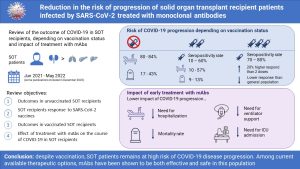Rev Esp Quimioter 2023; 36(4): 416-420
High macrolides and fluoroquinolones resistance rate in Mycoplasma genitalium in southern Tenerife
CRISTIAN MATEO LEÓN, DIEGO GARCÍA MARTÍNEZ DE ARTOLA, BERTA PINO-CALM
Published: 8 May 2023
http://www.doi.org/10.37201/req/014.2023
Introduction. Mycoplasma genitalium (MG) is a recognized sexually transmitted pathogen. Increasing resistance to main lines of treatment (macrolides and quinolones) justifies a genetic study of mutations to improve cure rates.
Material and methods. A total of 8,508 samples from April 2018 to July 2022 were processed using AllplexTM STI Essential Assay. In MG positive cases 23S rRNA V domain, gyrA and parC genes were studied. Mutations detected were checked to assess their clinical significance and medical records were reviewed to obtain demographic and treatment information.
Results. Resistance study was performed on 92 samples (65 men and 27 women). In relation to the genotypic study, 28 patients presented mutations to macrolides (30.43%). Most common was A2059G (18.48%). For quinolones, 5 patients (5.43%) had clinically relevant mutations in parC gene. Of note was a patient with G295 mutation in gyrA associated with G248T in parC. Thirty subjects underwent a test of cure (TOC). Azithromycin was the most common empirical regimen and moxifloxacin the main alternative.
Conclusions. High rate of resistance in our environment evidences the need for targeted therapy by genotypic study of macrolide resistance, supported by the detection of mutations in parC and gyrA to predict quinolones susceptibility and the use of TOC to evaluate treatment response
Rev Esp Quimioter 2023; 36(4): 416-420 [Texto completo PDF]


